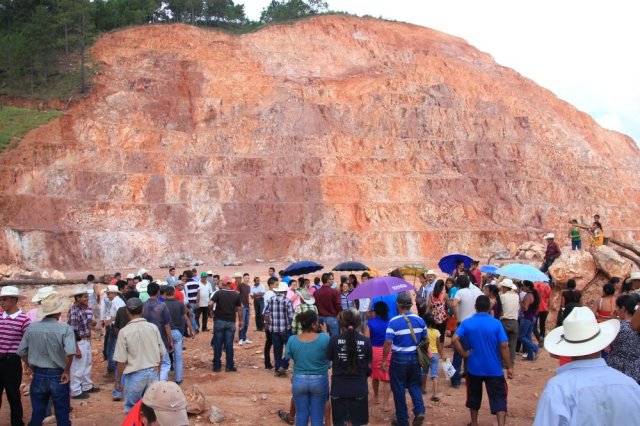
I was in Honduras last October visiting Azacualpa, a municipality under threat from Canadian corporate mining giant Aura Minerals and its San Andres mine in La Union, Copan.
At the time, residents from the rural municipality were successfully holding off the combined forces of the mine management, its security forces, the regional police, the local mayor, the provincial governor, the regional military commander and the Minister for Homeland Security (who arrived in the community by helicopter with his own entourage of state security bodyguards).
A year on, Aura Minerals, with the collusion of the post-coup Honduran regime, is moving to break the stalemate. There are plans to expand the existing open-cut gold mine, which will involve removing a cemetery that has served Azacualpa and neighbouring villages for more than 200 years.
In June, thousands of fish were found dead on the banks of the Lara River, which feeds into the main water supply for the capital of Azacualpa, Santa Rosa. The deaths were the result of a cyanide spill from the San Andres mine.
Honduran authorities responded to the cyanide spill with a team of “investigators” made up of representatives from the police, military and private security, along with a few token geologists. They have not responded to requests for information, leading community leaders to believe the investigation will simply be another cover-up exercise.
The cyanide spill has not deterred Aura Minerals from going ahead with the exhumation of the cemetery, which is perceived as the first step to relocating the entire township.
Community leaders resisting the threat to their township have been criminalised for their efforts. They have been under virtual house arrest for the past five years and are forced to make the two-hour journey to Santa Rosa every two weeks to present themselves before a magistrate as part of an ongoing legal battle.
The legal case began in 2012, when community members attempted to blockade the mine. The company bussed in scores of paid employees from neighbouring communities to try to legitimise their claims on the expansion of the mine.
The company also bought off a few members of the community to try to weaken the position of the majority of the nearly 100 families.
The company negotiated the relocation in 2012 with promises of glossy-brochure cottages that failed to materialise. The few that were built have been described as “dog kennels” – mass produced glorified sheds in an isolated urban wasteland with virtually non-existent agricultural opportunities.
As is often the case when communities fight back, the same corporate tactics are at play: the suborning of a government with questionable ethics or vision; the division and conquest of local communities; and the use of enhanced legal powers for security provisions to protect corporate interests.
Meanwhile, community interests get flushed down the drain.
Like the article? Subscribe to Green Left now! You can also like us on Facebook and follow us on Twitter.